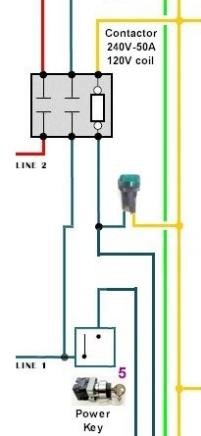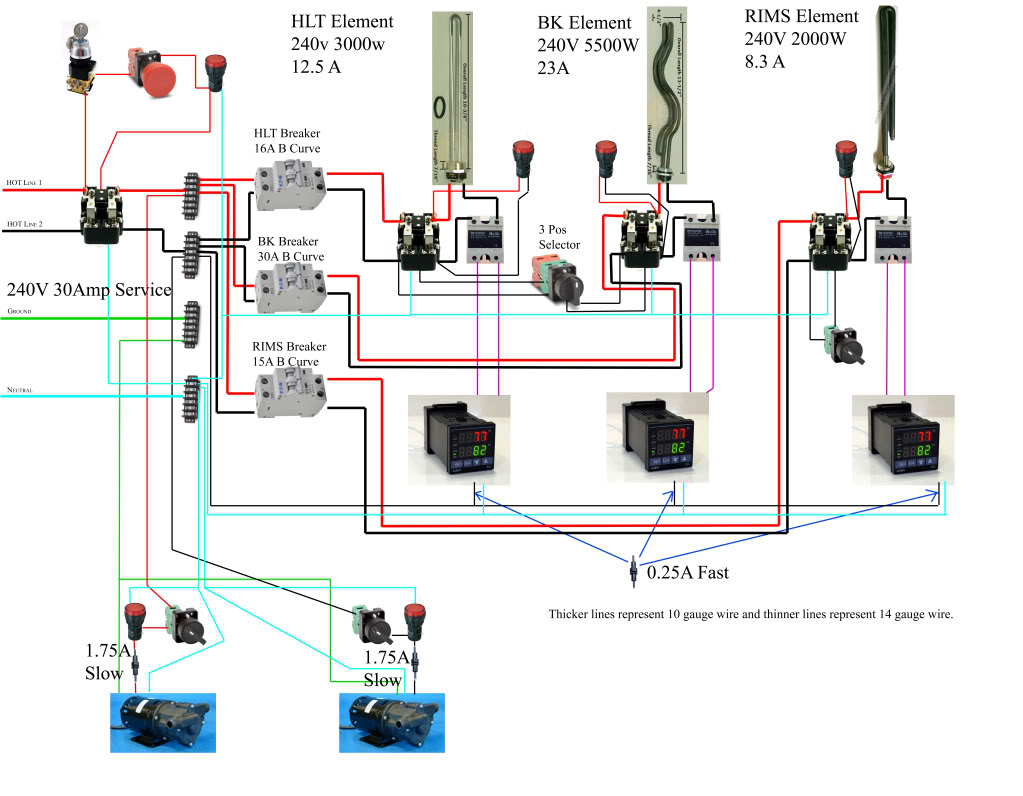WhiteArmadilloBrewing
Well-Known Member
- Joined
- Jul 28, 2017
- Messages
- 81
- Reaction score
- 5
I've got 240v & 120v power coming from my spa panel into my control panel. I have the GFCI protected 120v going directly to bus bars that power a split outlet for my two pumps.
I would like to start wiring my contactors, ssrs, din rail breakers, and fuses but couldn't find a straight answer on the best practice. I believe that based off searching this forum and the electric brewery forum that my wiring should proceed as follows:
---
Neutral & Ground run directly to bus bar
2 Hot Legs to (separate?) contactors 1st then to terminal blocks/bus bars with a switch wired to the contactor which acts as an on/off
---
Any help would be great! Cheers!
I would like to start wiring my contactors, ssrs, din rail breakers, and fuses but couldn't find a straight answer on the best practice. I believe that based off searching this forum and the electric brewery forum that my wiring should proceed as follows:
---
Neutral & Ground run directly to bus bar
2 Hot Legs to (separate?) contactors 1st then to terminal blocks/bus bars with a switch wired to the contactor which acts as an on/off
---
Any help would be great! Cheers!



